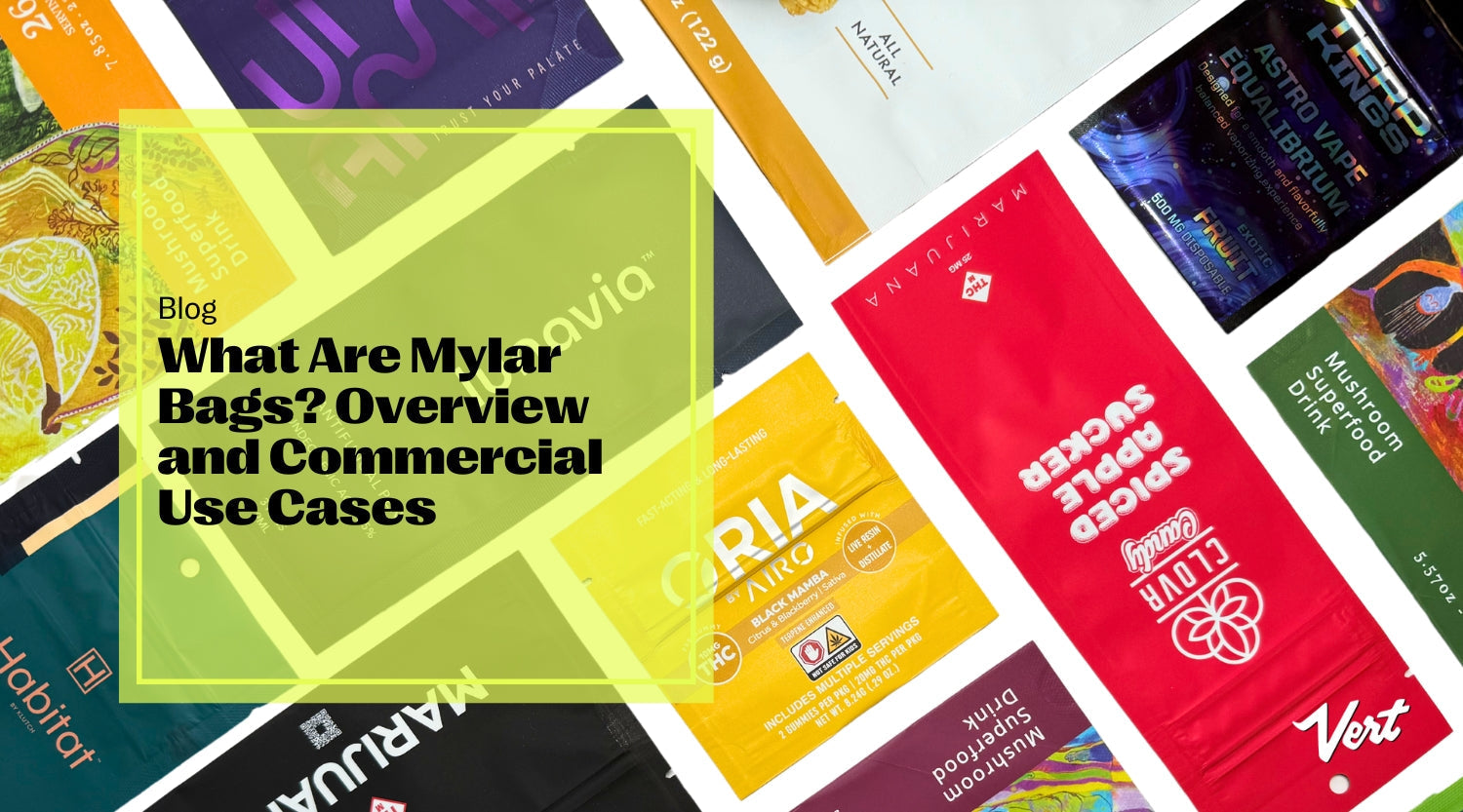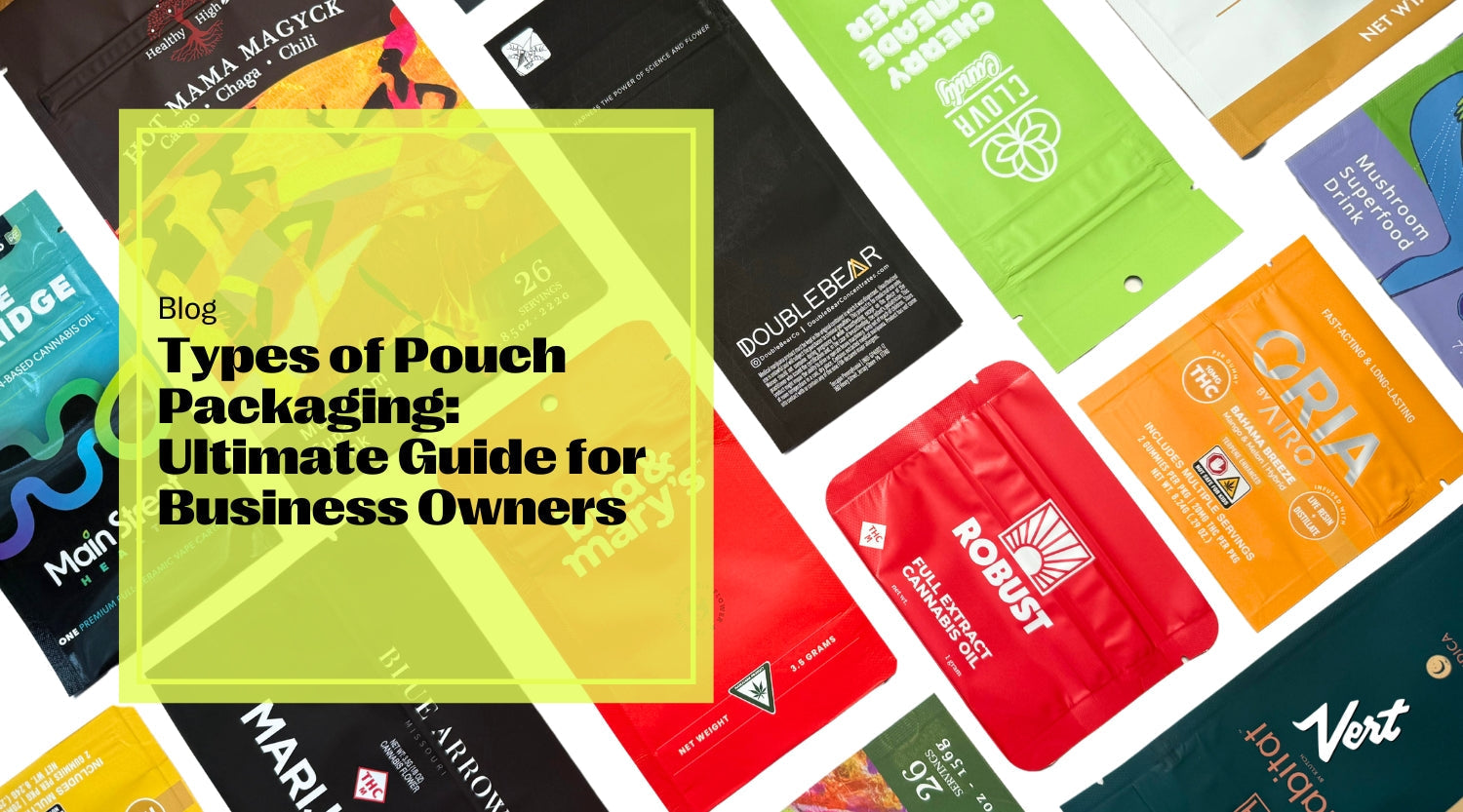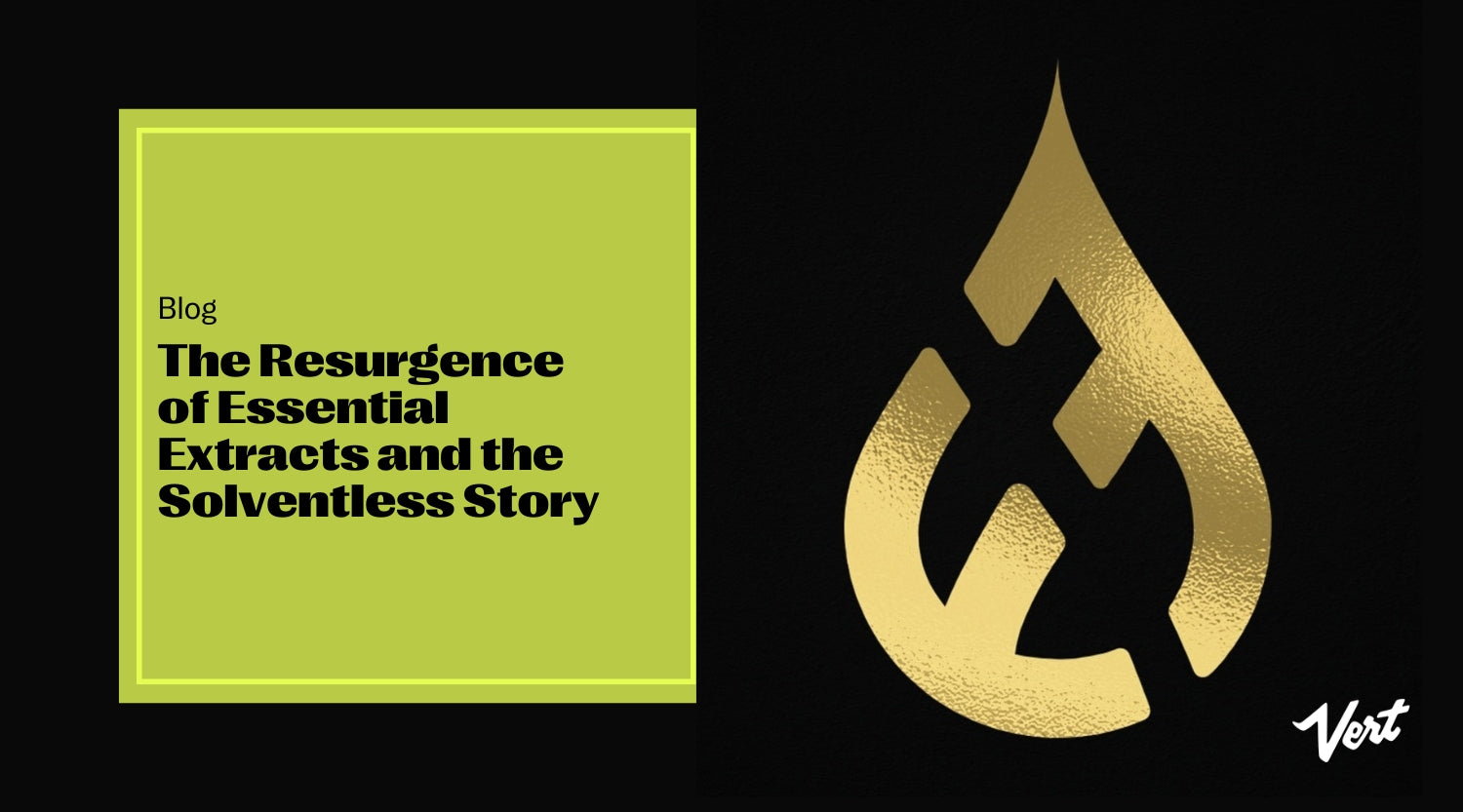Mylar bags are a high-performance type of pouch packaging made to protect consumable goods from light, moisture, and oxygen. They offer a combination of durability, excellent product barrier protection, and visual appeal.
Business owners need packaging that extends the shelf life of their products and gives customers a flavorful experience for as long as possible. Mylar delivers on both accounts. That’s why it’s fast becoming the standard for products ranging from coffee and trail mix to cannabis, supplements, and pet treats.

So, why are more companies switching over to this material? Let’s dig into what makes Mylar bags worth a closer look.
What Are Mylar Bags Made From?
Mylar bags are crafted from stretched polyethylene terephthalate (BoPET). It’s a tough film that offers high tensile strength and resistance to air and moisture.
A typical Mylar bag has three key layers:
- A polyester resin or PET layer for strength
- A layer of aluminum foil for barrier protection
- An inner food-grade polyethylene layer for safe contact with consumables
This barrier protects products more effectively than plain plastic, metal, or glass. Mylar barrier bags are excellent for storing food and sensitive products like supplements, pharmaceuticals, and herbs.
How Do Mylar Bags Work?
Mylar bags work by creating an airtight seal that limits exposure to oxygen, light, and moisture. These are the main culprits behind product degradation.
A tight seal is essential for storing consumable retail products as well as long-life food items like brown rice, white rice, whole wheat flour, and dried eggs, which are sensitive to environmental factors.
Benefits of Mylar for Packaging Food Products
Mylar packaging offers multiple benefits, making it one of the most popular packaging materials in the food industry today.
Key benefits of Mylar bags include the following:
1. Protects Freshness
When food is exposed to air and moisture, it doesn’t take long for the quality to drop. Coffee starts to lose its rich flavor, herbs aren’t as vibrant, and snacks go from crunchy to limp.
Mylar bags act as a shield, slowing down these changes. The result? Your food tastes and smells fresh for much longer, giving your customers a far better experience!
2. Reduces Waste and Returns
Spoiled goods not only increase business costs but also affect your company’s reputation. Customers remember when a product arrives fresh and when it doesn’t. By keeping products better protected, Mylar helps to reduce customer complaints and lower return rates.
3. Lightweight Option
Mylar bags are lightweight when compared to jars, tins, or rigid plastic. This brings shipping costs down and makes bulk storage a lot easier. If your products are shipped across states or the world, those weight savings add up quickly.
4. Brand-Friendly Design Options
Today’s custom Mylar bags aren’t just shiny silver. They can be printed with colorful graphics, matte finishes, custom logos, transparent windows, or whatever fits your brand’s vibe. Customization potential is a big part of why businesses love it.

5. Looks Great on Shelves
Products packed in well-designed Mylar bags grab attention. Clean, modern packaging makes a real difference when consumers are deciding what to purchase and what to pass over.
Many companies choose Mylar for their pouch packaging needs due to this material’s effective product protection, coupled with visual appeal.
What Are Mylar Bags Used For?
Mylar’s strength and flexibility make it a popular choice across a surprising number of industries. Various pouch sizes are available for various product types.

Consumable categories that commonly rely on Mylar packaging include:
- Dry foods like rice, pasta, grains, and beans
- Herbal products such as teas, spices, and cannabis
- Pet products like treats and dietary supplements
- Nutritional goods like protein powders and vitamins
- Coffee and tea, including everything from basic grounds to specialty blends
- Snack foods, including jerky and dried fruits
Because Mylar offers both visual flexibility and barrier properties in food packaging, it is widely adopted by brands that prioritize product freshness, safety, and branding impact.
Food Items You Can't Store in Mylar Bags
While Mylar bags are versatile, they’re not ideal for every food item.
Foods not ideal for Mylar storage include:
- Oily foods like nut butters or fried snacks that can turn rancid, even when sealed
- Moist foods such as fresh fruits, vegetables, or meats (they can go moldy without refrigeration)
- Soft bakery goods, unless combined with advanced vacuum sealing and refrigeration
- Dairy products like cheese and butter (these require refrigeration and breathable packaging).
Dry, shelf-stable items? Mylar’s your friend. Wet or perishable items? You’ll need something more robust or a different storage plan altogether.
There are alternative types of pouch packaging for high-moisture or high-fat foods. These include vacuum bags and specialty flexible packaging. These options use breathable films that better preserve texture and flavor while extending shelf life.
Shelf Life of Food in Mylar Bags
The shelf life of food is often dramatically extended when stored properly in Mylar bags.
Polished white rice can last up to 25-30 years when properly sealed and stored. Family consumer sciences agent Carolyn Washburn of Utah State University Extension affirms that removing oxygen from food storage bags reduces spoilage.
Oxygen causes oxidation, leading to rancidity and nutrient loss. That’s why it’s common practice to include an oxygen absorber in each Mylar bag.
Temperature and humidity also play a big role. Even the best-sealed bag won’t save products left sweating in a garage during a hot summer. Stored goods should be kept at 40-60°F for maximum lifespan.
The shelf life of stored food depends on factors like initial product moisture content, storage temperature, and the integrity of the heat seal. Using a food saver or professional heat sealer further improves shelf life.
Considerations and Tips When Using Mylar Bags
Using Mylar bags effectively requires attention to a few simple but critical factors.
1. Always Pair Mylar With Oxygen Absorbers.
Oxygen absorbers suck residual air out of the bag, helping to prevent spoilage. (Exception: sugar and salt don’t need absorbers).
2. Use Proper Sealing Tools.
A heat sealer works best, but a hair straightener set to high heat will create a strong seal in a pinch.
3. Label Clearly.
Once they’re sealed, many Mylar bags look identical. Always note the contents and the packaging date. That will save you major headaches later on!
4. Store Smart.
Storage in a cool, dark, and dry place is essential. High temperatures and humidity shorten shelf life, no matter how good the packaging is.
5. Pick the Right Thickness.
For most food storage, thin 5-millimeter-thick bags are the minimum. For really long-term storage or heavy items, thicker (like 7 millimeters) is even better.
FAQ: Mylar Bags for Long-Term Storage
Q1: Do I need oxygen absorbers for everything?
For most dry goods, yes. Oxygen absorbers are critical for keeping food fresh during long-term storage since oxygen accelerates spoilage.
Q2: Can Mylar bags be vacuum-sealed?
Not easily. Most home vacuum sealers can’t handle Mylar’s thickness. Heat sealing is usually the safer bet.
Q3: Are Mylar bags reusable?
Technically yes, if you open them carefully and avoid tearing. Keep in mind that repeated use makes the seal less effective.
Mylar Bags Are a Smart Investment
Mylar bags are a smart, affordable option for businesses that want to protect their product and brand. They offer solid protection against light, air, and moisture. They also don’t add much weight, which is a major shipping advantage.
From boutique coffee roasters to pet supplement startups, brands across industries are upgrading to Mylar because it simply works. If you want cutting-edge packaging, Mylar is a great choice.



Leave a comment
This site is protected by hCaptcha and the hCaptcha Privacy Policy and Terms of Service apply.